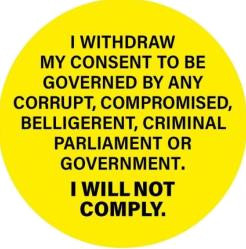2021-04-28
Revised 2021-04-29, 2021-05-02
When one writes to one's MP one might hope to receive a response that addresses one's specific queries, but it's probably no surprise to find that this is not always the case.
Lockdown Sceptics recently highlighted just such an exchange of letters concerning the Covid vaccination campaign, and it makes for interesting reading:
"I find it alarming that much attention is paid to the headline figures of relative risk reduction (RRR) with no mention of the absolute risk reduction (ARR). The RRR of the Pfizer BioNTech vaccine is 95.1% (CI 90.0%-97.6%, p=0.016). Dig a little deeper into the data and you learn that the ARR is only 0.7% (CI 0.59%-0.83%, p<0.001) and the number needed to vaccinate in order to prevent one infection is 142 (CI 122-170)"
OK, risk of what exactly? The initial vaccine trials were primarily designed to test whether the vaccine would reduce the severity of the symptoms.
In this article I am going to discuss the risk of death.
The difference between relative and absolute risk reduction is important. It means that given you catch Covid-19, your risk of dying is reduced by the RRR if you were previously vaccinated, compared with the risk if you were not.
But your absolute risk reduction (ARR) takes into account your risk of catching Covid-19 in the first place and relates that to the risk of the same outcome had you been vaccinated.
So for example, if 1% of those who catch Covid in your age group die (for most age groups it is a fraction of that), and your chance of catching Covid within the next year is 1 in 1,000, then your absolute chance of dying unvaccinated in that year is 10 in a million since you must first catch Covid before you can die from it.
(NB: Official statistics are so skewed that 2020 deaths by Covid must be considered overstated, and the waters are further muddied by other factors, but excess deaths from all causes in the UK in 2020 were reported by The Actuary as around 70,000. Estimating the UK population at 70 million gives us a snazzy 1 in a thousand chance of catching and dying from Covid in 2020 if all excess deaths were covid deaths (which is questionable). I assume this will be lower in 2021 due to improving immunity and reduced population of the vulnerable)
If we assume for the sake of simplicity that the vaccine reduces your RRR chance of dying by 90%, then your ARR (absolute risk reduction) is the difference between 10 in a million and 1 in a million, i.e.: 9 in a million. Not so impressive.
But we have yet to account for the risk from the vaccine itself, which is plainly not zero. And why are we using a period of one year? Because the official talk is of an additional jab every year, so this allows us to compare the opportunity for death-by-covid to a comparable opportunity for death-by-vaccine. Time matters.
Let us assume for the sake of argument there is also a 10 in a million chance (work with me here) that you will die of a vaccine adverse reaction. On the above assumptions this would be the same as your chance of dying unvaccinated from Covid, so your chances of dying if you take the vaccine are already more than 10 in a million because you would still have an additional 1 in a million chance of catching Covid and dying from it.
So do we have any data on the real risk of dying from vaccination?
Yes – but not reliable figures. The new MHRA yellow card reporting system is a passive system which relies on the public (including clinicians) to file a report for each adverse event. Studies of the not dissimilar VAERS system in America suggest that only 1% of adverse reactions may get reported.
All we can say at the moment is that between December 2020 and April 2021:
- around 41 million doses of vaccine (Pfizer/AstraZeneca) were administered
- around 200 thousand MHRA yellow card reports have been filed, including 961 reports of death in the immediate aftermath.
(These figures can currently be accessed through .pdf downloads accessible at the very end of the weekly MHRA Coronavirus vaccine - weekly summary of Yellow Card reporting)
It is probably safe to say that the MHRA system is not capturing anywhere near 100%.
For illustration purpose only, let us be generous and guess that the new MHRA system is better than VAERS and captures 10% of adverse events. This leads to an estimate of around ten thousand actual deaths, and a risk of immediate death-by-vaccination of around 250 per million.
This figure is merely exploratory! You can make your own guess on whatever basis you feel comfortable about.
This set the scene, but only indicates a ball-park. It is a preliminary stab at estimating actual deaths-by-vaccine in the immediate aftermath of vaccination.
Other factors may be just as important or more so:
- as the susceptible population is reduced by deaths, the remaining population may become more resilient (both to Covid and to death-by-vaccine)
- rising immunity will reduce covid deaths over time
- seasonality may be a factor for both Covid and vaccine
- longer-term safety beyond immediate vaccination aftermath is another ball-game which we ignore at our peril but for which we have no data
- non-fatal vaccine events may be both life-changing and more frequent
- these figures rely on reporting only - it is not thought that anybody actually investigates these reports to establish true cause of death
- vaccine adverse event rates may vary by age group etc
- other factors
So in conclusion -
I have highlighted the assumptions that were plugged into the calculations above, which were chosen to render the arithmetic comprehensible whilst not departing too far from realism.
To work out if vaccination works for you, verify/modify these assumptions according to your situation/inclination, and apply the latest statistics.
Go figure! ![]()



